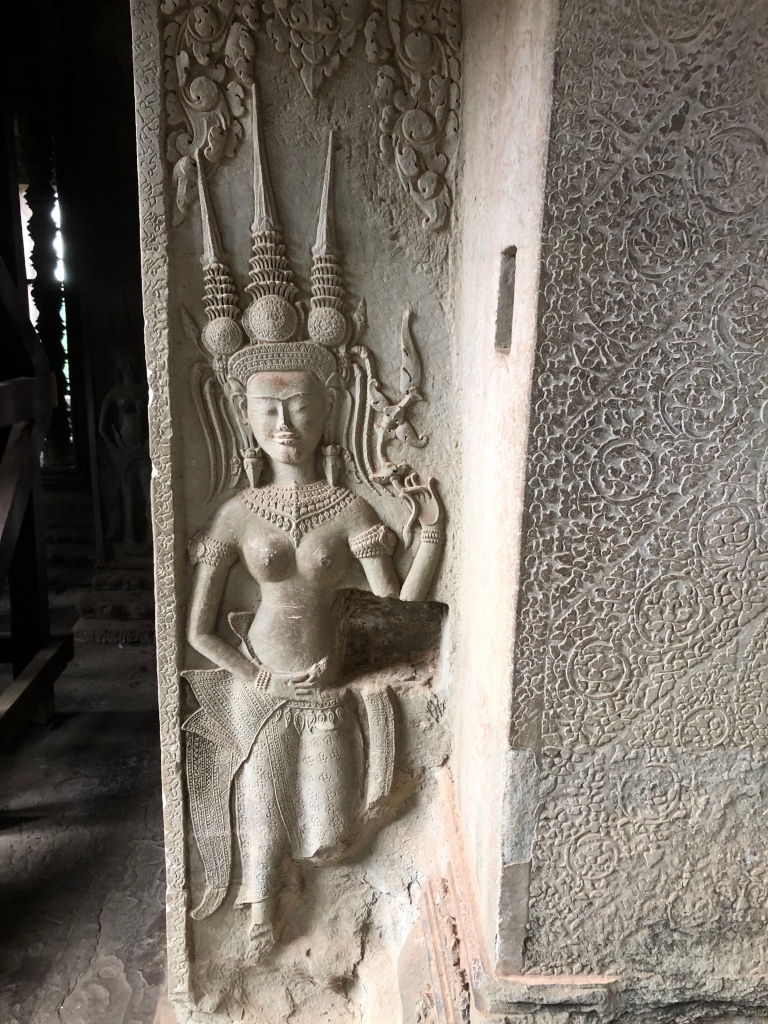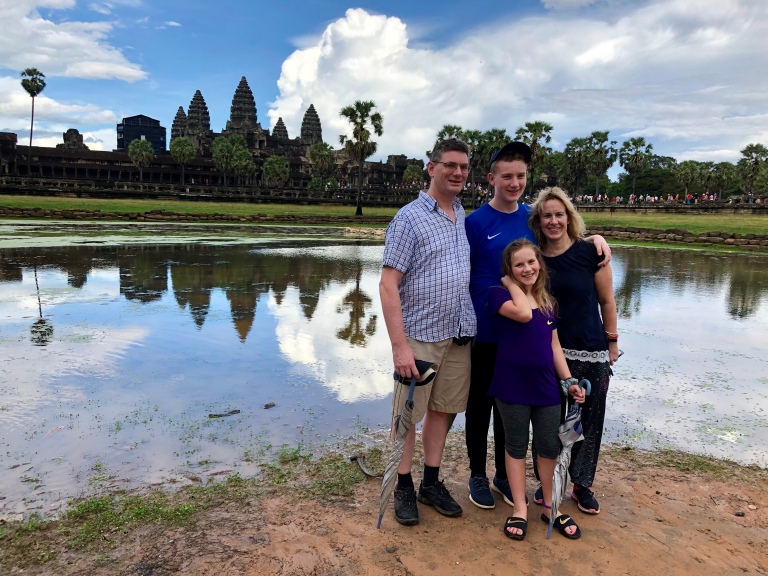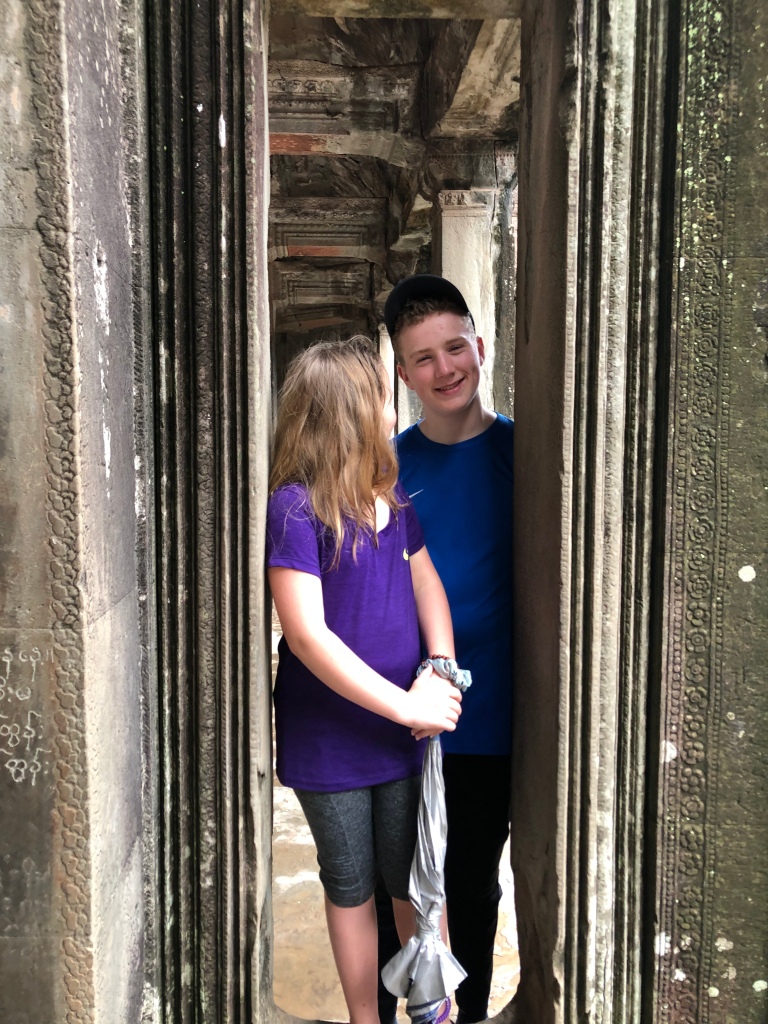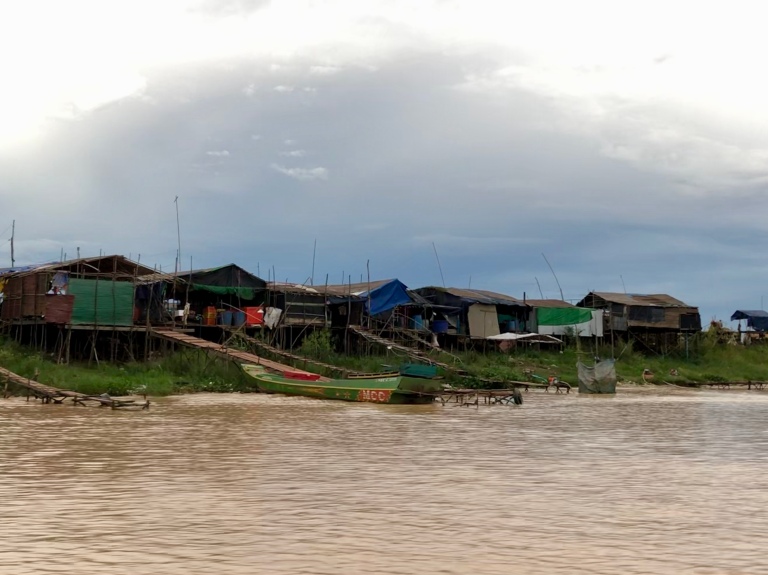I like a good story about royals and like to think I know the odd thing about them, but when it comes to King Suryavarman II, I’m embarrassed to say, I had never heard of him. He was a Khmer King from the early 12th century and just happened to rule over the largest empire in the world. While the crusades were battling on, Henry 1 had power in England (London’s population was running at around 20 000) and the Song Dynasty was busy with gunpowder. Here in the Kingdom of Cambodia, things were ticking along. Although the Champa kingdom was a little problematic and needed dealt to, Ankor was home to 1.8 million people.


The Khamer kingdom included parts of present day Vietnam, Laos, Thailand, Myanmar and the Malay Peninsula along with what we know today as Cambodia. No wonder they reflect on their past from their developing lens of today.


King Suryavarman II, was a bit of a builder. If I could achieve in my lifetime what he did in 37 years I would be pretty happy. Some five to ten million sandstone blocks were moved from Mt Kulen approximately 56 mile away and rearranged here into what we know as Ankor Wat. Scholars debate when elephants carried them or how canal networks were used, either way let’s face it, it surpasses our garage project and trips to Mitre ten.

The temple itself is dedicated to the Hindu god Vishnu. Vishnu is the ‘preserver’ in the triad that includes Brahma (creator) and Shiva (destroyer). After that I am a bit rusty. It is generally acknowledged as the funerary for the king, it’s orientation to the west reinforcing the symbolism between the setting sun and death.
It is built in three levels to represent three elements, air, earth and water. The later sure made its presence felt with a massive downpour which some of us delighted in the ultimate outcome for the rest of the day. Really what problem is a bit of wet clothing stuffed in a suitcase for the journey home.

 The gods of course occupied the top tower and while heaven has never been easy to reach, I can understand why the stairs have featured in the worlds scariest stairs. Indeed I agree with the article covering this theme that they are as memorable as the temple itself! Of course a strong rebuke was made, what is the shame on being on hands and knees as you head towards the gods on a near 70 percent incline? Actually it was the down in the pouring rain that scared the bejeezers out of me and I am pleased under 12s were banned from climbing the top tower.
The gods of course occupied the top tower and while heaven has never been easy to reach, I can understand why the stairs have featured in the worlds scariest stairs. Indeed I agree with the article covering this theme that they are as memorable as the temple itself! Of course a strong rebuke was made, what is the shame on being on hands and knees as you head towards the gods on a near 70 percent incline? Actually it was the down in the pouring rain that scared the bejeezers out of me and I am pleased under 12s were banned from climbing the top tower.

 While earlier we had the place with just a few others around, after the rain it’s crazy busy here. Some two million people pass through each year. Even if only half are paying, $37 US each, its a pretty large pot to play with. To be fair, they have made stair improvements since the article, sadly however I saw little evidence of preservation, one bit of scaffolding, two men checking out some stone work and zero protection of hands touching the art works. Here is a little example of the impact of tourist hands on the stone.
While earlier we had the place with just a few others around, after the rain it’s crazy busy here. Some two million people pass through each year. Even if only half are paying, $37 US each, its a pretty large pot to play with. To be fair, they have made stair improvements since the article, sadly however I saw little evidence of preservation, one bit of scaffolding, two men checking out some stone work and zero protection of hands touching the art works. Here is a little example of the impact of tourist hands on the stone.

 The odd monk was to be found, monkeying about was easier to find. Thank goodness we didn’t opt for the three day Ankor experience!
The odd monk was to be found, monkeying about was easier to find. Thank goodness we didn’t opt for the three day Ankor experience!



 Steph, Frath and Anan too did some monkeying around of their own. Whoever you are, I hope you are proud of your legacy.
Steph, Frath and Anan too did some monkeying around of their own. Whoever you are, I hope you are proud of your legacy.

With Ankor complete, it was time to check out the Ankor Thom which features Bayon. In contrast to Ankor Wat, this is a Buddhist temple.



Built late 12th or early 13th century under the hands of King Jayavarman VII who goes down in history for his military success against the Champa. I got the chance to get up close and personal with him as all good tourists do.

This may be the last of the temples to be built at Ankor but what a legacy. Bayon had 54 towers with a face on each side. Whether they are all representations of Jayavarman himself or images of the Bodhisattva, they are impressive and light dances off the smiling stone face changing their presence according to the position of the sun. The literal translation is victory mountain, the artistic vision cannot be denied some 700+ years later so I would definitely call it a victory.

Here too I see neglect, this pile represents a hell of a jigsaw puzzle requiring solving. Beyond my patience levels clearly, but I hope the worlds mathematicians and computer programmers are set loose on the problem sometime soon.

The final temple takes nature with it. In the late 12th century, Jayavarman went on a bit of a building frenzy and this was one of the first public works. I suggested Caleb pay particular attention as Jayavarman constructed this in honour of his family with particular emphasis given to the wisdom of his mother as the main image. I suspect it fell on deaf ears.

The once mighty Khmer empire fell in the 15th century and while Ankor and Bayon in the years to come still had occupants who plundered its treasures and fought their battles from around the jungles, here Ta Prohm lay in silence, trees enveloping it to remind all that nature remains the supreme ruler.

It’s rediscovery was thanks to the French who duly moved in, set up shops and hotels and paved the way for the tourist mecca that ultimately the whole area represents. A little war took its toll over the years, land mines now duly cleared (sadly by elephants), ensured our safe passage through the canopy of trees and around the site.

Tomb raider elevated Ta Prohm’s status, but largely this site has been ‘preserved’ as it was found.

 Travel is never dull and curiosity about Tonle Sap lake which I heard about from a follower traveller on the boat resulted in some cash changing hands and an extraordinary journey along something that masqueraded as a road. We bounced around grateful for the seat belts and Roger started to become unsettled as we turned onto dirt roads in the middle of nowhere. I remained confident that our ex Monk guide would see us through. We pass heartland Cambodia and eventually stoped at a boat ramp where we boarded and cruised for a couple of kilometres. Desperate poverty lined the banks while buffalo grazed the waters and fisherman cast their nets.
Travel is never dull and curiosity about Tonle Sap lake which I heard about from a follower traveller on the boat resulted in some cash changing hands and an extraordinary journey along something that masqueraded as a road. We bounced around grateful for the seat belts and Roger started to become unsettled as we turned onto dirt roads in the middle of nowhere. I remained confident that our ex Monk guide would see us through. We pass heartland Cambodia and eventually stoped at a boat ramp where we boarded and cruised for a couple of kilometres. Desperate poverty lined the banks while buffalo grazed the waters and fisherman cast their nets.

Tonle Sap has water which changes direction. Swelling water’s from the Mekong’s rainy season push the flow back upstream into the lake. The result is an up to tenfold rise. Seasons pass, the dry comes and the water will flow back out. The net result is that this natural phenomenon has sustained agrarian civilisations for centuries.

For many ethnic Vietnamese, Tonle Sap is also home. Floating village settlements are sprinkled around the lake. Tourism has provided welcomed funds as they live a life out here, too poor to buy land, they are at the mercy of the water flows. A small saving grace is the beauty of the setting sun they get to enjoy daily.


Today’s guide, Phearin, was a pleasure and we took him out to dinner. He helped us navigate the night market for a couple of mementos and ensured our safe passage. May our paths cross again one day.



Great post 🙂
LikeLike